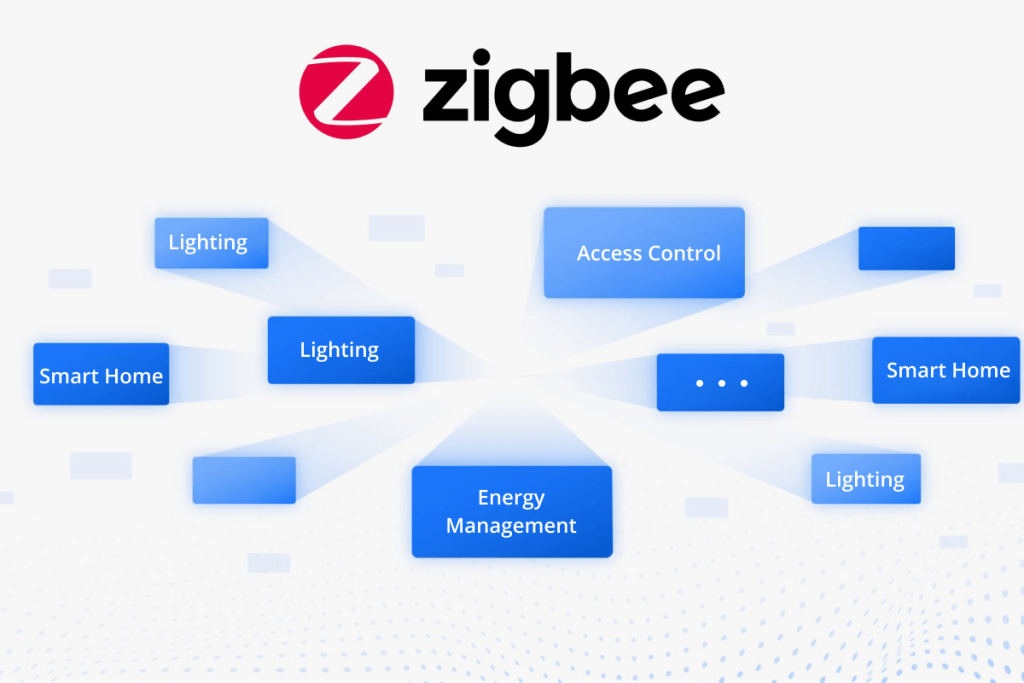What is Zigbee? Zigbee can be saying one of the most popular home automation protocols. It is widely used in a wide range of smart home products including but not limited to Zigbee gateways, home automation thermostats, PIR motion sensors, alarm sirens, water leak sensors, electric meters, smart lighting system, smoke sensors, etc.
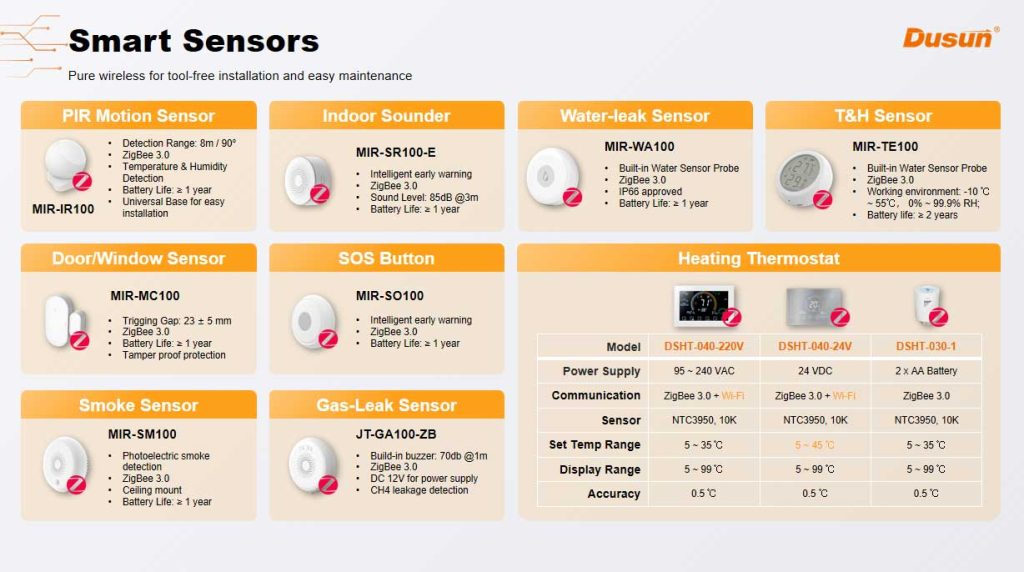
History of Zigbee Protocol
Given the fact that the Zigbee protocol has undergone multiple iterations, understanding its evolutionary path and the different versions is very important. The evolution of Zigbee showcases the protocol’s continuous improvement and adaptability. For businesses and developers, knowing these versions well may help them understand the Zigbee compatibility issues.
Zigbee is a low-power LAN protocol based on the IEEE802.15.4 standard. As per international standards, Zigbee technology is designed for short-range and energy-efficient wireless communication. The name Zigbee is derived from bees’ communication dance which communicate with each other and bees conveys information on where pollen is, via the zig-zagging wing vibrations and buzzing sounds.
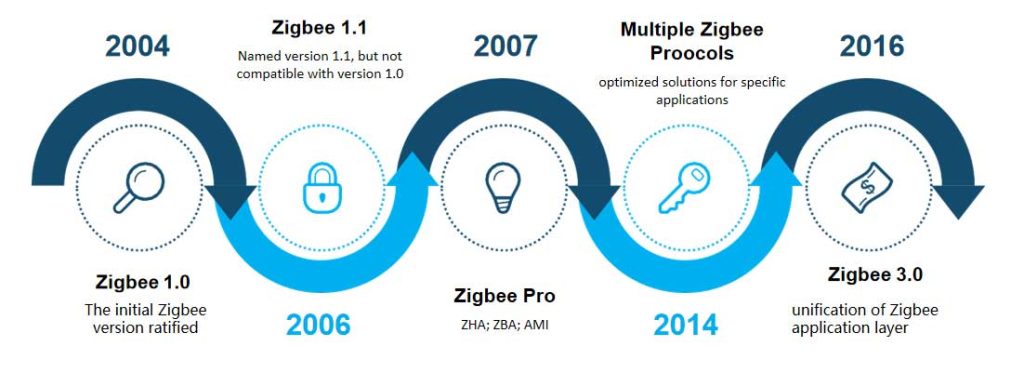
Zigbee 1.0
Zigbee, formerly known as HomeRF Lite, has been ratified as a wireless communication protocol based on the IEEE 802.15.4 standard in 2004 and the Zigbee Alliance announced availability of Specification 1.0 on June 13, 2005, also known as the ZigBee 2004 Specification.
Zigbee 1.1
Zigbee 1.0 is the very first version of Zigbee specification, and it showed some flaws. To address and revise those issues, ZigBee1.1 was launched. Zigbee Cluster Library has replaced value pair structure used in the 2004 stack, which allow Zigbee devices to asynchronously report attribute changes to relevant clients, enabling real-time attribute updates and notifications. Examples of cluster names are Zigbee Light Link, Home Automation, and Smart Energy. Note that this new protocol is incompatible with ZigBee1.0.
Zigbee Pro
Even though ZigBee1.1 has undergone significant changes from ZigBee1.0, it was realized that the original vision was still not fully achieved. Therefore, in 2007 Zigbee specification underwent yet another revision to make it compatible with the previous versions and to add the ZigBee Pro, which allows a ZigBee Pro device to connect to and function on a legacy Zigbee network and vice versa. ZigBee Pro operates in the 2.4 GHz ISM band and also adds support for a sub-GHz band, providing more flexibility in terms of frequency usage.
Know more about Zigbee Versions including Zigbee 3.0, Zigbee Pro, Zigbee Green Power, Zigbee Smart Energy, etc.
During this revision, the Zigbee Alliance focused on expanding Zigbee’s capabilities in three specific application types: Zigbee Home Automation (ZHA), Zigbee Building Automation (ZBA), and Advanced Metering Infrastructure (AMI).
Multiple Specialized Zigbee Protocols
As more and more smart applications adopt the Zigbee protocol, and limited by hardware constraints, such as CPU speed and memory capacity, to better adapt to the needs of different scenarios, Zigbee Alliance has segmented the application layer into various protocols, aiming to provide optimized solutions well suited for specific industries.
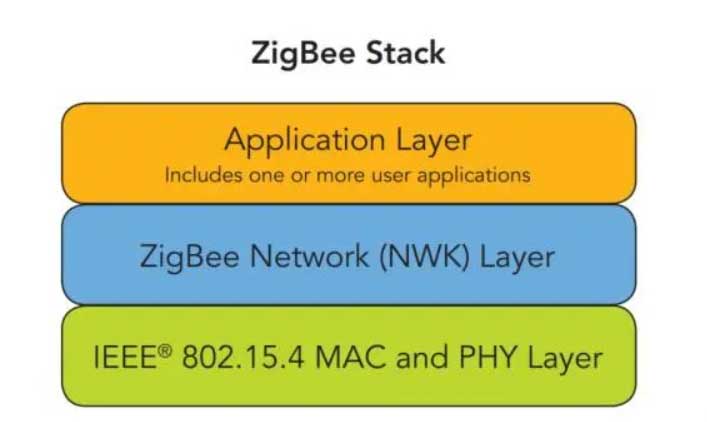
These protocols include but not limited to:
- ZHA (Zigbee Home Automation): ZHA is the first specialized Zigbee application profile announced in 2007. After it, other application profiles have been published as well. Designed for home automation applications, covering areas such as lighting control, HVAC, security systems, and energy management within residential environments.
- ZLL (Zigbee Light Link): Focused on lighting applications, providing standardized commands and attributes for controlling and managing lighting devices such as bulbs, switches, and dimmers.
- ZBA (Zigbee Building Automation): Targeting commercial and industrial building automation applications, it enables the integration and control of various systems, including lighting, HVAC, access control, and energy management, within commercial buildings.
- ZHC(Zigbee Healthcare): Catering to the specific needs of healthcare-related applications, including medical device monitoring, patient tracking, and remote healthcare services.
Zigbee 3.0
With the continuous evolution of hardware solutions, such as low-cost and low-power wireless SoC options, and the growing need to interconnect various devices across multiple markets (like in smart home area, smart home device manufacturers have certain freedoms in adding thrie own things to their respective products, which results in Zigbee products adhering to the Zigbee protocol are unable to communicate with one another. This raises complexity of product design and development as well as reduced user-friendliness), the Zigbee Alliance launched Zigbee 3.0.
Zigbee 3.0 has unified the previously mentioned application layer protocols such as ZHA, ZLL, ZBA, and ZHC. For devices from various manufacturers to work together, everything from joining the network to device operations like turning on and off needs to be specified precisely. Zigbee 3.0 has also standardized the device discovery and networking procedures for devices using different application layer protocols, which make it much more easier for Zigbee device to network and for developers creating products with greater ease. For example, users can easily connect and control smart switches and smart light bulbs from different manufacturers via a Zigbee 3.0 gateway.
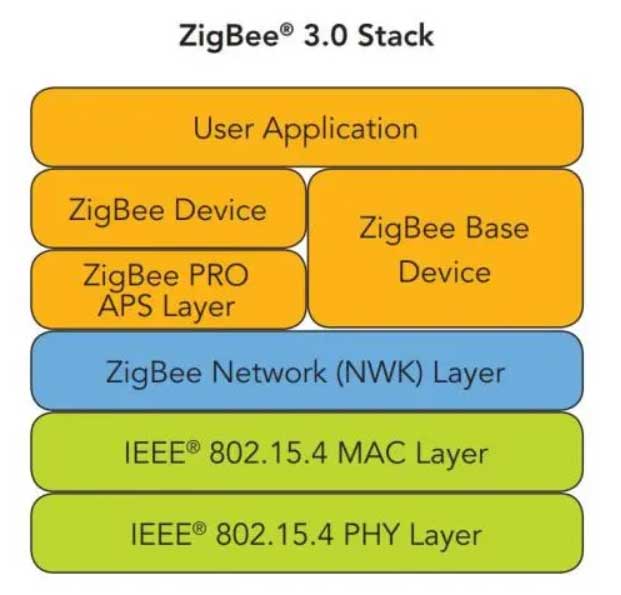
What is Zigbee in IoT?
Zigbee features low power consumption and low data rate, and is widely used in IoT and various embedded applications, such as home automation, wireless sensor networks, smoke and intruder warning, building automation, etc.
Get to Know More on Zigbee in IoT
For example, in smart home application, a Zigbee gateway can connect and manage a large number of ZigBee nodes, locally processing the data and uploading it to the cloud platform for remote access and control.
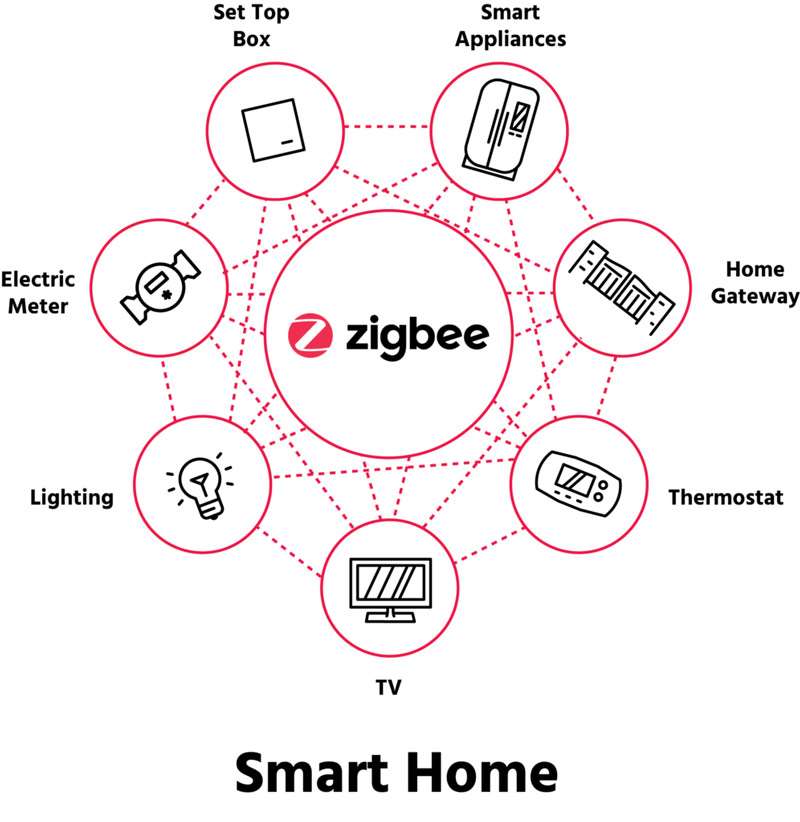
In industrial setting, such as industrial automation and environmental monitoring, Zigbee sensors can collect temperature, humidity, pressure, flow and other data, and then the Zigbee DTU (Data Transfer Unit) will send the collected data to the data center or cloud platform for further analysis and processing. Simultaneously, Zigbee DTU also enables remote control and equipment adjustment, including temperature control, valve opening and closing, and more.
Read Article: How to send sensor data to the cloud?
Advantages of Using Zigbee Technology
Zigbee is a comprehensive IoT solution that offers a complete stack, including mesh networking and a universal language for smart objects to collaborate effectively. Its key strength on interoperability allows Zigbee devices work seamlessly with each other regardless of the manufacturer. This makes it possible for developers and manufacturers to build products with reduced development efforts, accelerating time to market, and for products to quickly enter and integrate into major IoT ecosystems and ensure ease of use for end-users.
Main Advantages of Zigbee Technology are as follows:
- Low Power Consumption: Nodes working on Zigbee network have short operating cycles, low transmit/receive efficiency, as well as the adoption of sleeping mode to conserve energy.
- Reliable Transmission and Strong Anti-interference: Zigbee employs spread spectrum DSSS technology to enhances the reliability of wireless transmission; Meanwhile, the MAC layer includes a data acknowledgment mechanism, further improving the dependability.
- Simplified Protocol: Zigbee significantly simplifies its protocol, compared to Bluetooth (less than one-tenth of Bluetooth), to reduce the requirements on communication controllers and making implementation easier.
- High Security: Zigbee utilizes encryption algorithms such as AES-128/64/32 and the install-code mechanism during the process of joining network, in order to enhance security.
- Low Data Rates: Zigbee operates at data rates ranging from 20 to 250 kbps. The specific rates are 250 kbps at 2.4 GHz, 40 kbps at 915 MHz, and 20 kbps at 868 MHz.
- Long Range: Zigbee offers transmission ranges of 10 to 100 meters. By increasing the transmit power, communication distances of 1 to 3 kilometers can be achieved.
- Flexible Operating Frequencies: Zigbee operates in the 2.4 GHz band, as well as the 868 MHz band (Europe) and the 915 MHz band (Americas), all of which are license-free frequency bands.
What is Zigbee Stack?
Protocol refers to a set of communication standards that both communicating parties need to perform data transmission and reception according to the standard. A protocol stack, on the other hand, particular way that the protocol is implemented. It can be thought of as a collection of code and library functions that developers utilize to enable wireless data transmission according to the protocol. Typically, commercial protocol stacks only provide interfaces (similar to APIs in the context of the internet).
As shown in the image, there are two fundamental parts of Zigbee protocol. IEEE 802.15.4 defines the PHY (physical layer) and MAC (media access layer) specifications. This part relates to the hardware support for Zigbee, including link establishment, maintenance, termination, and the implementation of the 0 and 1 bit transmission.
the Zigbee Alliance defines NWK (network layer), APS (application support layer), and APL (application layer) specifications. This part relates to data encryption and routing, point-to-point data transmission within the network.

Physical Layer (PHY)
handling the details of physical wireless communication, including frequency selection, power control, and data transmission rates. It defines how the physical signals are transmitted and received over the air.
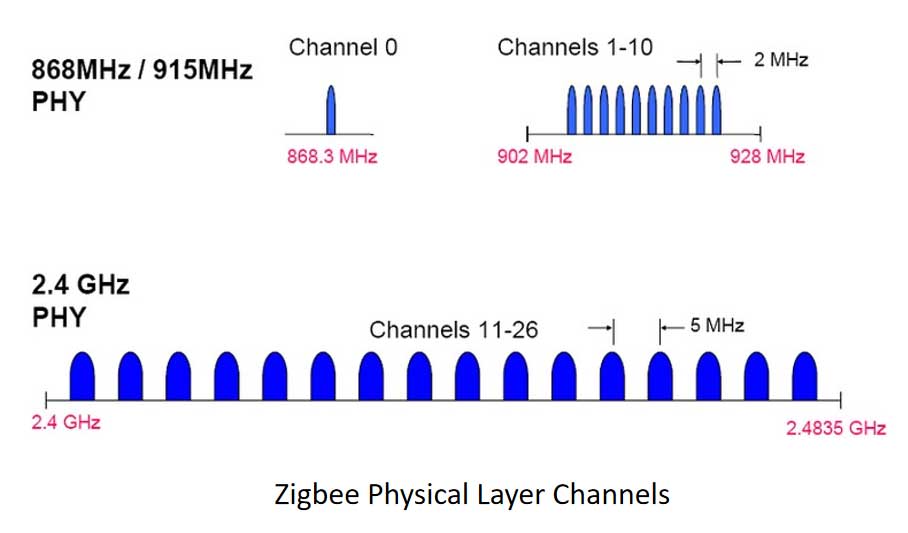
Medium Access Control (MAC)
responsible for basic network control functions such as device addressing, frame structure definition, and collision avoidance. The MAC layer ensures that devices can access the network efficiently and share the available bandwidth effectively.
Network Layer (NWK)
responsible for device routing and packet forwarding tasks. It allows devices to uss hierarchical routing techniques to enable flexible network topologies, such as star, mesh, and multi-hop networks. The NWK layer ensures that data packets are delivered to their intended destinations within the Zigbee network.
Application Layer (APL)
defines the data formats for commands, control, and data exchange between devices, in order to provide a standardized format for data exchange and enable efficient communication between different devices. The application layer supports the specific functionalities and features required by the application or use case.
Difference Between Zigbee Pro and Zigbee 3.0
In Zigbee Pro specification, different protocols are defined based on distinct markets, and there is a considerable customized content is reserved. As a result, products from different manufacturers often cannot be interoperable.
Zigbee 3.0 protocol unified and standardized these six major application layer protocols and allows all products that meet zigbee3.0 are interconnected and work together.
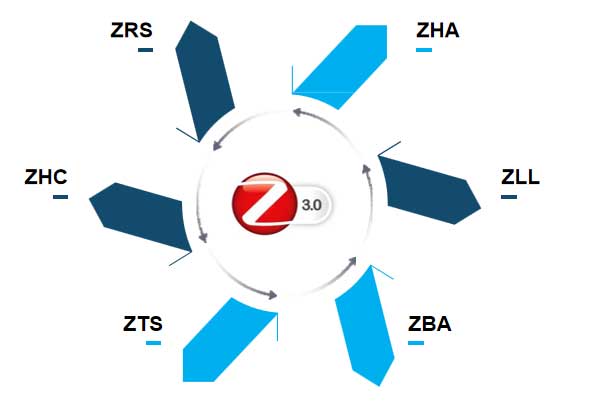
Other Zigbee Application Protocols
RF4CE (Radio Frequency for Consumer Electronics)
RF4CE is a standard and protocol for home appliance remote control. “RF” stands for “Radio Frequency,” and “CE” stands for “Consumer Elec tronics.”
RF4CE is designed to replace traditional infrared remote control technology by utilizing radio frequency communication, offering a more reliable and flexible remote control experience. Compared to infrared, RF4CE provides longer transmission distances, the ability to penetrate obstacles, and supports two-way communication.
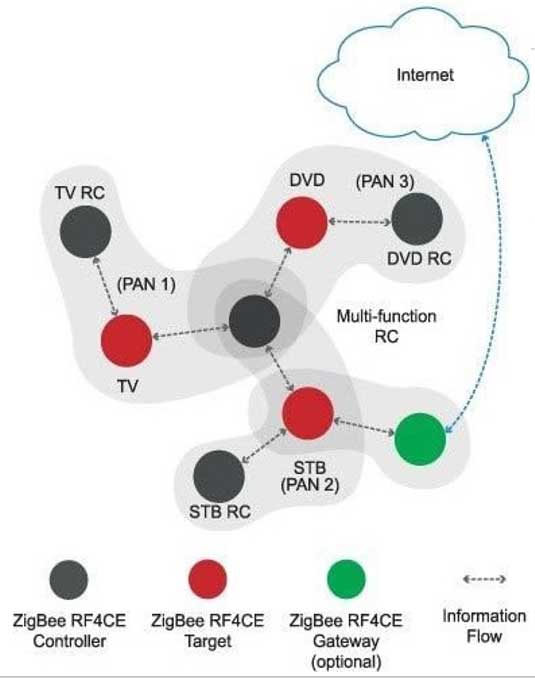
Green Power
Zigbee Green Power is a technology that enables energy harvesting for ultra-low-power devices in the Zigbee ecosystem. It is designed to provide power-efficient solutions for devices that require extremely low power consumption, such as battery-less or long standby devices. Examples of such devices includes lighting switches and door and window sensors.
- Ultra-Low Power SoCs: Zigbee Green Power devices operate at power levels that are orders of magnitude lower, enabling long-term operation with minimal energy requirements.
- Optimized Data Transmission: for devices that may have extended periods offline, data packet length, transmission paths, connection recovery, and on-network time are optimized to conserve energy.
- Specialized Application Layer Protocol: to make devices transmit essential data efficiently, the application layer protocols accommodate compressed information and limited transmission attempts.
- Battery-less and Long Standby Devices: Zigbee Green Power is particularly suitable for devices that do not rely on batteries or require long standby times.

Zigbee Device Networking
Zigbee devices communicate with each other and transmit data in in a diverse type of network topologies. We made an video to talk about it!
Three Classes of Zigbee Devices
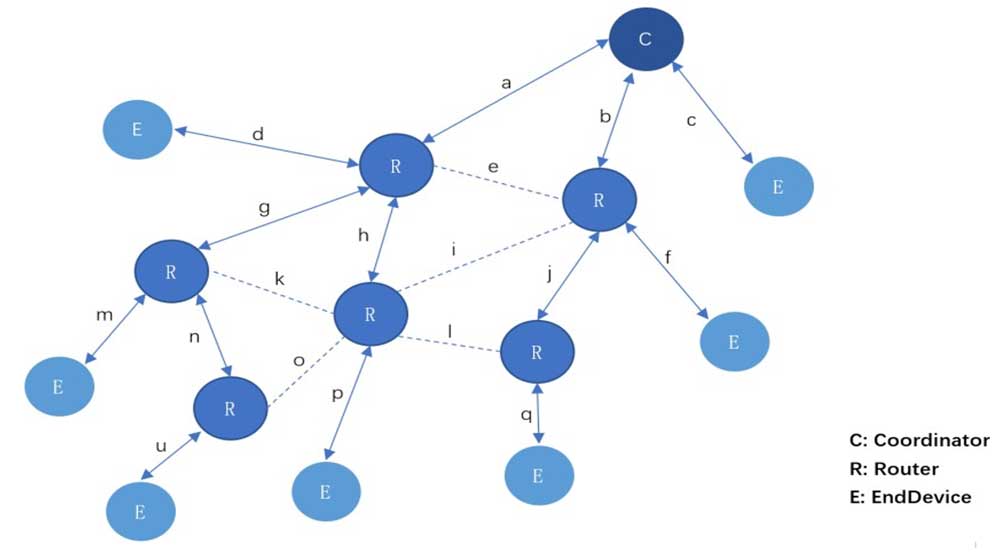
Zigbee Coordinator (ZC)
Zigbee Coordinator is responsible for establishing and managing a Zigbee network. It can also bridge Zigbee network to other networks or the internet via various hardware interfaces such as UART, Ethernet, or other wireless modules like Wi-Fi or GSM. Each network has a single Zigbee Coordinator, which serves as the trust center and security key repository in addition to storing network information.
Zigbee Router (ZR)
Beside the capability to run application functionality, control lights, motors, and collect physical data, etc., Zigbee Router is another device that can forward data to other devices by acting as an intermediate router. Zigbee router products are typically powered by a main power source, ensuring their constant availability on the network.
Zigbee End Device (ZED)
Zigbee End Device can also control lights, motors, collect physical quantities, etc. However, unlike Zigbee Routers or Coordinators, ZED may choose to enter sleep mode, and is often battery-operated, and is unable to relay data. To extend battery life, Zigbee End Devices usually include only the necessary communication functionality to interact with their parent node (either the coordinator or a router), while spending the remaining time in sleep mode. Meanwhile, a Zigbee End Device can be manufactured for less money because it requires less memory.
Zigbee Networking Principle
- A Zigbee End Device can only connect with a parent node within the network, which could be a router or coordinator. They send and receive data through this direct connection.
- The parent node can be changed or reassigned. This allows for network flexibility and adaptability, enabling nodes to establish new connections with different parent nodes as needed.
- Zigbee networks can have multiple paths for data transmission. However, the lowest packet loss rate principle is prioritized.
- When a node exits the network, its child nodes have the ability to autonomously rejoin the network through alternative parent nodes. This is also called self-healing mechanism.
What is Zigbee Used For?
You may have complete control over your environment with Zigbee. It is such a versatile technology that can be utilized to create interconnected and intelligent environments tailored to specific needs. We will outline some instances for reference.
Zigbee Application Examples
- Smart Lighting Control System: Zigbee can be employed to create smart lighting systems, allowing wireless control of lights, dimming options, and automation features.
- Environmental Monitoring and Control System: Zigbee-enabled sensors can be utilized to monitor and control parameters such as temperature, humidity, air quality, and energy consumption in various environments.
- Automatic Meter Reading System: Zigbee can enable wireless communication between utility meters and data collectors, facilitating automated meter reading and efficient energy management.
- Curtain Control System: Zigbee technology can be employed to control motorized curtains or blinds wirelessly, offering convenient and automated control options.
- Smoke Sensor Alert System: Zigbee-enabled smoke sensors can be integrated into a home or building security system, providing real-time alerts and enhancing safety measures.
- Medical Monitoring System: Zigbee can be utilized in healthcare applications for remote monitoring, allowing the collection and transmission of vital signs and health data.
- IoT HVAC System: Zigbee-enabled thermostats and HVAC controllers can be employed to enhance energy efficiency and enable remote control of heating, ventilation, and air conditioning systems.
- Home Set-Top Box and Remote Control with Built-in Home Automation System: Zigbee technology can be integrated into set-top boxes and remote controls, enabling seamless control and automation of home entertainment systems and smart devices.
- Home Security System: Zigbee can be utilized in home security systems to connect sensors, alarms, and access control devices, enhancing overall security and enabling remote monitoring.
- Building Automation: Zigbee technology can be deployed in commercial buildings for centralized control and automation of various systems, including lighting, HVAC, security, and energy management.
Applicable Scenarios for Zigbee Technology
- When there are numerous points where data needs to be gathered and monitored;
- When the data volume to be transmitted is small and the hardware cost is required to be inexpensive;
- When it requires secure and reliable data transmission;
- When the devices is designed with compact form factors, making it inconvenient to accommodate larger rechargeable batteries or power modules;
- Battery-powered devices
- When the terrain is complex and there are plenty of monitoring locations, but a wider network coverage is necessary;
- When the existing mobile networks have blind spots or limited coverage;
- When telemetry and remote control systems that require low-volume data transmission over existing mobile networks;
- …
How to Develop Zigbee Products?
As Zigbee allow devices to connect and communicate with each other with the same IoT language, operate in low power consumption, robust mesh networking capability, etc., millions of Zigbee items are currently installed in various sectors like residential automation, industrial automation, and retail industry.
The growth potential of the Zigbee market is evident from market projections. According to Mordor Intelligence, The ZigBee Market size is expected to grow from USD 4.59 billion in 2023 to USD 6.14 billion by 2028, at a CAGR of 6.01% during the forecast period (2023-2028). This projection highlights the significant role Zigbee technology plays in enabling intelligent and interconnected environment. So, are you planning to develop your own Zigbee products and collaborate to expand the market share together?
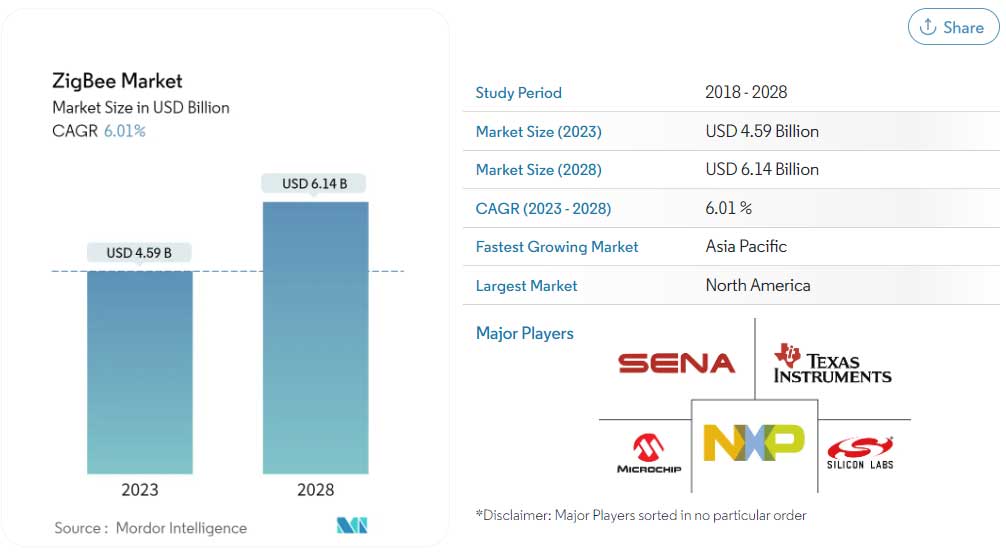
Zigbee Industrial Chain
The Zigbee industry chain typically includes four major parts: chip providers, solution providers, platform service providers, and terminal devices.

Zigbee ICs
Chips serve as the “brain” of IoT applications, and low-power, highly reliable semiconductor chips are essential components in almost every aspect of the Internet of Things. Silicon Labs has introduced multiple ultra-low-power Zigbee SoC families featuring PSA Level 3 Secure Vault protection, making it a leader in the realm of Zigbee chips. Their chips are well-suited for smart home, medical, and industrial applications. All of Dusun IoT’s Zigbee gateways are using Silicon Labs’ SoCs to ensure robust wireless Zigbee performance.
Zigbee Solutions
Solution providers leverage above mentioned Zigbee chips to develop various Zigbee-based solutions to address the demands of many industries. This process is inseparable from designing and manufacturing of specialized Zigbee devices. Depending on the application scenario and specific requirements, Zigbee devices include, but are not limited to, Zigbee sensors & controllers, Zigbee modules, and Zigbee control panels. The development of Zigbee devices requires a certain level of expertise and specialized knowledge on embedded systems, power management, structural design, casing, connectivity technologies, etc.
Dusun IoT is a Zigbee hardware solution provider. We offer a range of Zigbee smart hardware devices and an ecosystem supply chain. Additionally, we provide universal Zigbee gateways that offer secondary development interfaces, which allows for seamless connection with various Zigbee 3.0 devices and integration with your own IoT application platforms. You can develop or port your own proprietary software using our selection of developer gateways, and we will offer technical and documentation assistance.
Zigbee Platform
Platform service providers facilitate data exchange and communication between terminal devices and solutions by offering a range of platforms and services. As a crucial component of device aggregation, application services, and data analysis, IoT platforms need to provide both device management and control capabilities at the device level, as well as PaaS services for application development, services, and system integration. These types of service providers include, but are not limited to, Amazon, Google, Tuya, and more.
Zigbee Products
Zigbee terminal products are the ultimate output of the entire industry chain. They can be smart home devices, industrial sensors, smart lighting modules, etc. By integrating Zigbee technology, these products enable interconnectivity between devices, providing intelligent and convenient services. Furthermore, Zigbee products serve as the direct interface between users and Zigbee technology , allowing users to enjoy its benefits and convenience. Only when Zigbee terminal products are extensively used in the market, the value of Zigbee technology can be fully reflected.
Process of Developing Zigbee Products
- Device Type: Choose the kind of device—gateways, wall switches, etc.—for which you wish to create the product.
- Chip Platform: Choose a chip platform supplier and confirm its compatibility with Zigbee.
- Device Attributes: Refer to the Zigbee Cluster Library and Zigbee Device Library to determine the supported attributes and commands for the chosen device type.
- Device Behavior: Based on the Base Device Behavior Specification, define the essential Zigbee functionalities to be implemented on the device, such as network joining, device identification, and connection with other devices.
- Certification: Apply for and obtain Zigbee certification from the Zigbee Alliance.
Final Words
After exploring the history of Zigbee, its use in the IoT, its unique advantages, the protocol stack, networking methods, use cases and how to develop Zigbee products, we hope that you gain a deeper understanding of this efficient and reliable wireless communication technology. We believe that this comprehensive explanation of Zigbee in our article is one of the most thorough resources available in 2024, aiming to provide strong support to readers who are eager to understand Zigbee technology and develop Zigbee products.
If you have any questions regarding the implementation and application of Zigbee technology, Dusun IoT, as a leading manufacturer in the global Zigbee hardware development field, is your trusted partner. We have outstanding Original Design Manufacturing (ODM) capabilities and can provide customized solutions for you. Please feel free to inquire for more details.
Note: This article has been written with the assistance of AI tools, particularly in terms of word optimization, in order for a better reading experience. However, the content of the article has been verified and validated by the author to ensure its accuracy and reliability.









